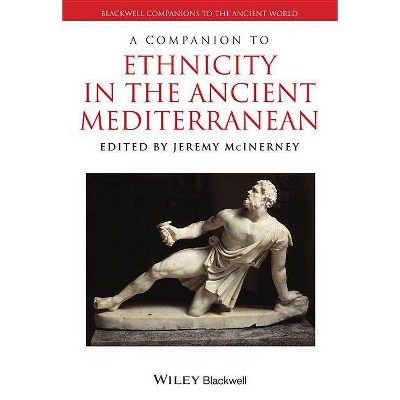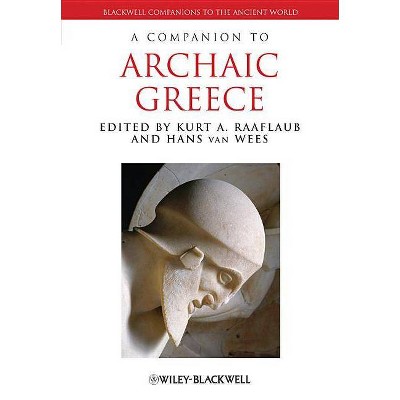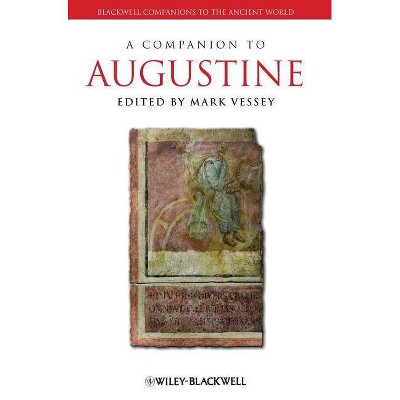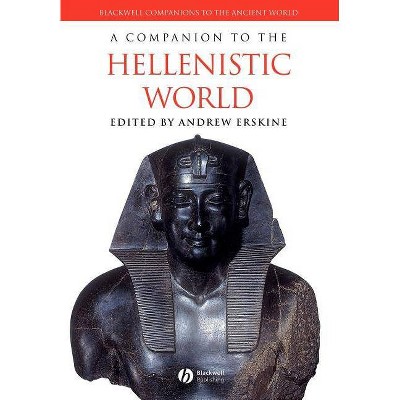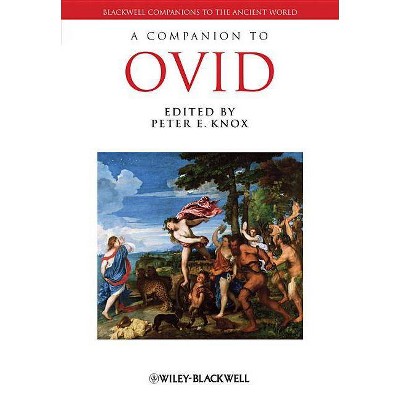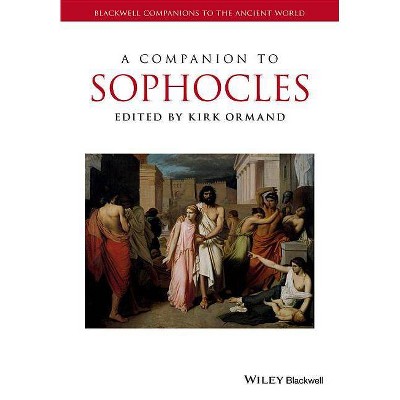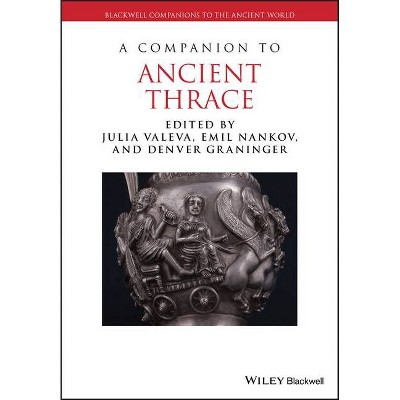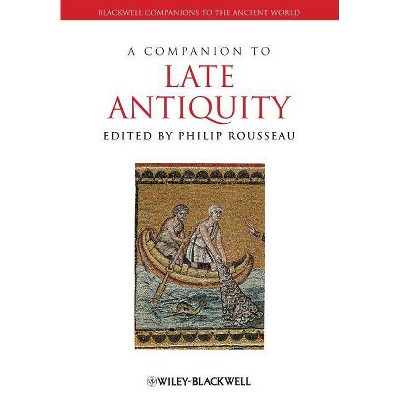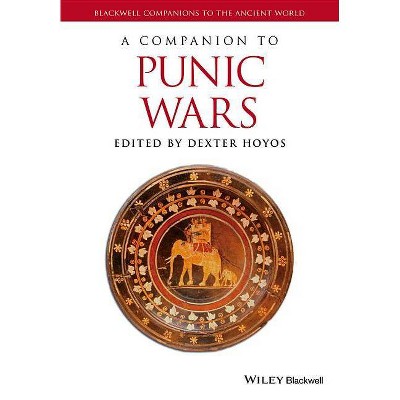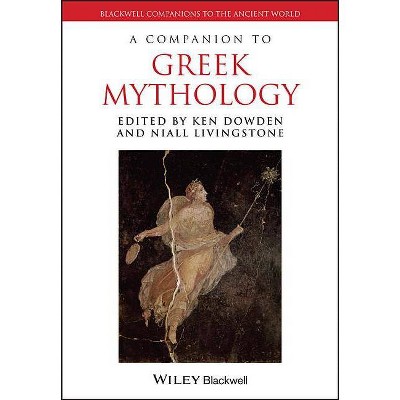A Companion to Ancient Agriculture - (Blackwell Companions to the Ancient World) by David Hollander & Timothy Howe (Hardcover)
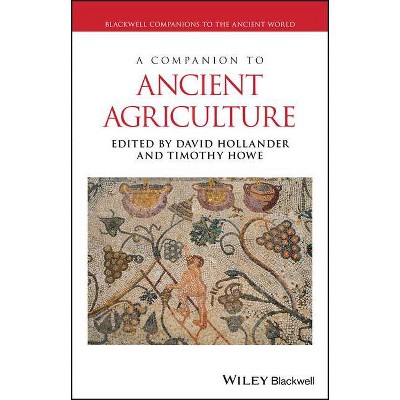
Similar Products
Products of same category from the store
AllProduct info
<p/><br></br><p><b> About the Book </b></p></br></br>"In 1970, introducing his Roman Farming, K.D. White justly lamented the lack of attention being paid to Greco-Roman agriculture. Nearly fifty years later, he would presumably be quite pleased with how the field has developed. Beginning in the 1970s (and no doubt in part due to White's own work) there has been steady growth in the number of monographs and articles on aspects of Greek and Roman agriculture as well as new commentaries on, and translations of, the most important ancient texts. Furthermore, instead of a largely text-driven approach, ancient agricultural history now employs an array of archaeological evidence (e.g., botanical and faunal remains) and methodologies (e.g., field survey, isotopic analysis). Students of the agricultural history of ancient Italy, to cite one regional example, now have new editions, translations, and commentaries on the fundamental literary texts (e.g., Goujard 1975 for Cato's De agricultura and Heurgon 1978 on Varro's Res rusticae), monographs, edited volumes, and articles putting those writers' works and lives into the broader context of Republican history (e.g., Reay 2005 and many of the chapters in Becker and Terrenato 2012) and literature (e.g., Kronenberg 2009). Archaeologists have published the results of fields surveys, new excavations of rural sites (including exciting recent work on small, non-elite sites by the Roman Peasant Project, Ghisleni et al. 2011), a synthesis of the survey data (Laurano 2011), a catalogue of the villas in central Italy (Marzano 2007), and important overviews (e.g., Forni and Marcone 2002). In the Greek world, archaeological survey in particular has spawned a generation of multidiciplinary studies on the interactions between lanscape and people, between rural and urban (Halstead and Frederick 2000; Adam-Veleni, Poulaki and Tzanavari 2003; Alcock and Cherry 2004; Bresson 2016). What accounts for this astonishing development in what many outsiders probably regard as a fairly dry subject? Undoubtedly one cause is the increased interest in the ancient economy. Since ancient economies were overwhelmingly agricultural, the farming sector demands serious attention. Environmental and demographic research as well as growing interest in foodways have also prompted more work on rural life in antiquity. Efforts to better estimate the population of Roman Italy have led, for example, to interest in the land's carrying capacity and thus more attention to issues of agricultural yields (on modeling Roman production, see Goodchild 2013; for Seleukid Mesopotamia, see Jursa 2010). The need to take stock of all these developments inspired us to develop this Companion which we hope offers an entrâee into a field now so rich in research as to be perhaps somewhat intimidating"--<p/><br></br><p><b> Book Synopsis </b></p></br></br><p><b>The first book-length overview of agricultural development in the ancient world</b><i> </i></p> <p><i>A Companion to Ancient Agriculture</i> is an authoritative overview of the history and development of agriculture in the ancient world. Focusing primarily on the Near East and Mediterranean regions, this unique text explores the cultivation of the soil and rearing of animals through centuries of human civilization--from the Neolithic beginnings of agriculture to Late Antiquity. Chapters written by the leading scholars in their fields present a multidisciplinary examination of the agricultural methods and influences that have enabled humans to survive and prosper. </p> <p>Consisting of thirty-one chapters, the <i>Companion</i> presents essays on a range of topics that include economic-political, anthropological, zooarchaeological, ethnobotanical, and archaeobotanical investigation of ancient agriculture. Chronologically-organized chapters offer in-depth discussions of agriculture in Bronze Age Egypt and Mesopotamia, Hellenistic Greece and Imperial Rome, Iran and Central Asia, and other regions. Sections on comparative agricultural history discuss agriculture in the Indian subcontinent and prehistoric China while an insightful concluding section helps readers understand ancient agriculture from a modern perspective.</p> <ul> <li>Fills the need for a full-length biophysical and social overview of ancient agriculture</li> <li>Provides clear accounts of the current state of research written by experts in their respective areas</li> <li>Places ancient Mediterranean agriculture in conversation with contemporary practice in Eastern and Southern Asia</li> <li>Includes coverage of analysis of stable isotopes in ancient agricultural cultivation</li> <li>Offers plentiful illustrations, references, case studies, and further reading suggestions</li> </ul> <p><i>A Companion to Ancient Agriculture </i>is a much-needed resource for advanced students, instructors, scholars, and researchers in fields such as agricultural history, ancient economics, and in broader disciplines including classics, archaeology, and ancient history.</p><p/><br></br><p><b> From the Back Cover </b></p></br></br><p>A COMPANION TO <b>ANCIENT AGRICULTURE</b> <p><b>An authoritative overview of agricultural development in the ancient world</b> <p><i>A Companion to Ancient Agriculture</i> investigates the history and development of agriculture in the ancient world, focusing primarily on the Near East and Mediterranean regions. This unique text explores the cultivation of the soil and rearing of animals through centuries of human civilization--from the Neolithic beginnings of agriculture to Late Antiquity. Chapters written by the leading scholars in their fields present a multidisciplinary examination of the agricultural methods and influences that have enabled humans to survive and prosper. <p>Consisting of thirty-one chapters, the <i>Companion</i> presents essays on a range of topics that include economic-political, anthropological, zooarchaeological, ethnobotanical, and archaeobotanical investigation of ancient agriculture. Chronologically-organized chapters offer in-depth discussions of agriculture in Bronze Age Egypt and Mesopotamia, Hellenistic Greece and Imperial Rome, Iran and Central Asia, and other regions. Sections on comparative agricultural history discuss agriculture in the Indian subcontinent and prehistoric China while an insightful concluding section helps readers understand ancient agriculture from a modern perspective. <ul> <li>Presents a full-length biophysical and social overview of ancient agriculture</li> <li>Provides clear accounts of the current state of research written by experts in their respective areas</li> <li>Places ancient Mediterranean agriculture in conversation with contemporary practice in Eastern and Southern Asia</li> <li>Includes coverage of analysis of stable isotopes in ancient agricultural cultivation</li> <li>Offers plentiful illustrations, references, case studies, and further reading suggestions</li> </ul> <p><i>A Companion to Ancient Agriculture</i> is a much-needed resource for advanced students, instructors, scholars, and researchers in fields such as agricultural history, ancient economics, and in broader disciplines including classics, archaeology, and ancient history.<p/><br></br><p><b> About the Author </b></p></br></br><p><b>David Hollander</b> is Associate Professor of History, Iowa State University, USA. He is author of <i>Money in the Late Roman Republic</i> and<i> Farmers and Agriculture in the Roman Economy</i> and an editor of <i>The Encyclopedia of Ancient History</i>. <p><b>Timothy Howe</b> is Professor of History and Ancient Studies, St. Olaf College, Minnesota, USA. Professor Howe is a field archaeologist and agricultural historian and is Senior Editor for <i>The Ancient History Bulletin</i>. He is author of<i> Pastoral Politics: Animals, Agriculture and Society in Ancient Greece</i>.
Price History
Price Archive shows prices from various stores, lets you see history and find the cheapest. There is no actual sale on the website. For all support, inquiry and suggestion messages communication@pricearchive.us
